Unlock efficiency with our guide to last mile delivery optimization. Learn key strategies, tech solutions, and cost-saving tips to transform your logistics.
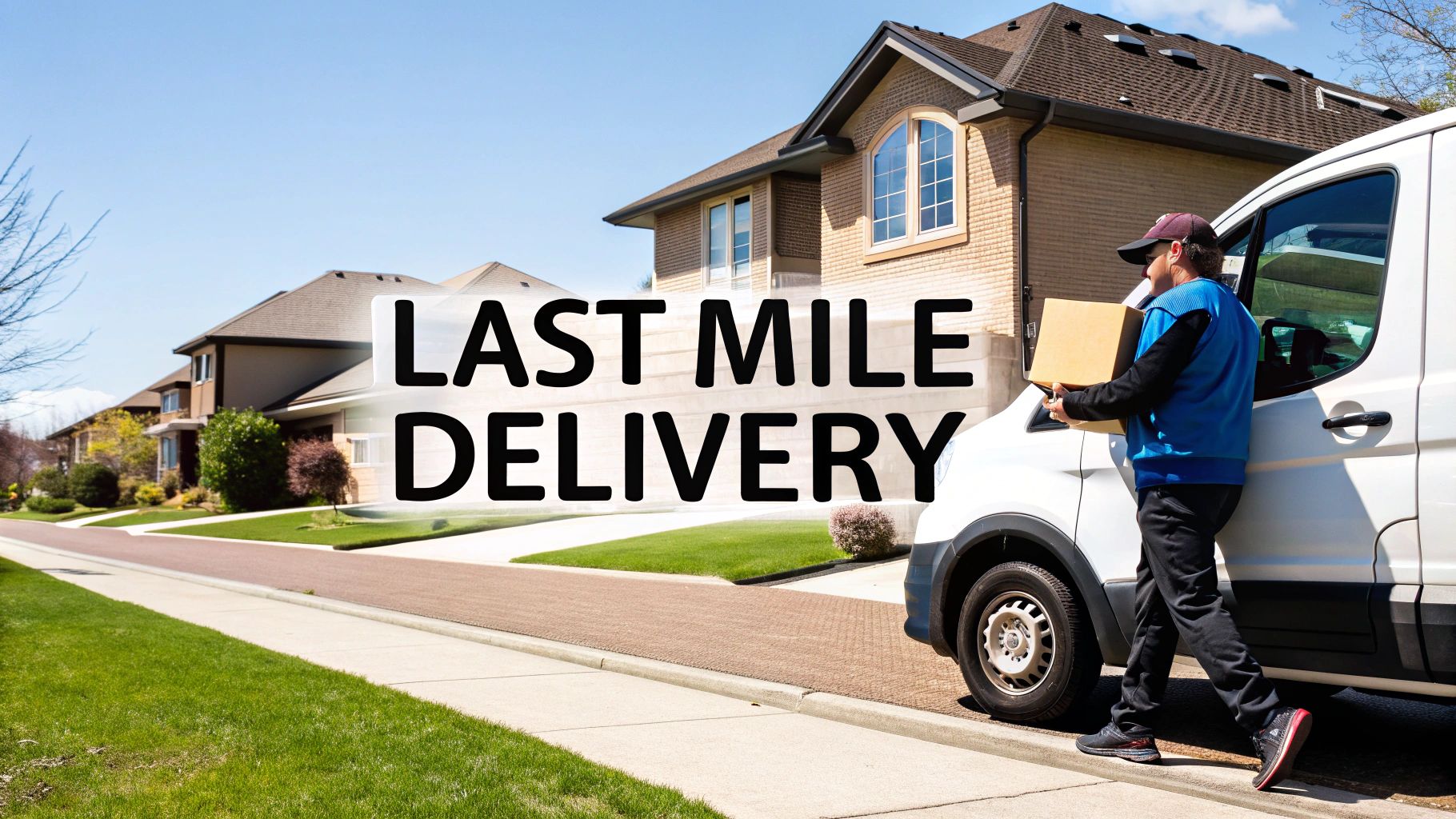
Last mile delivery optimization isn't just about buzzwords; it's about using smart tech and even smarter planning to nail the final, most crucial step of getting an order to your customer. It’s all about making sure packages get from a local hub to someone's front door as quickly, reliably, and affordably as possible.
Frankly, this is often the hardest and most complex part of the entire supply chain.
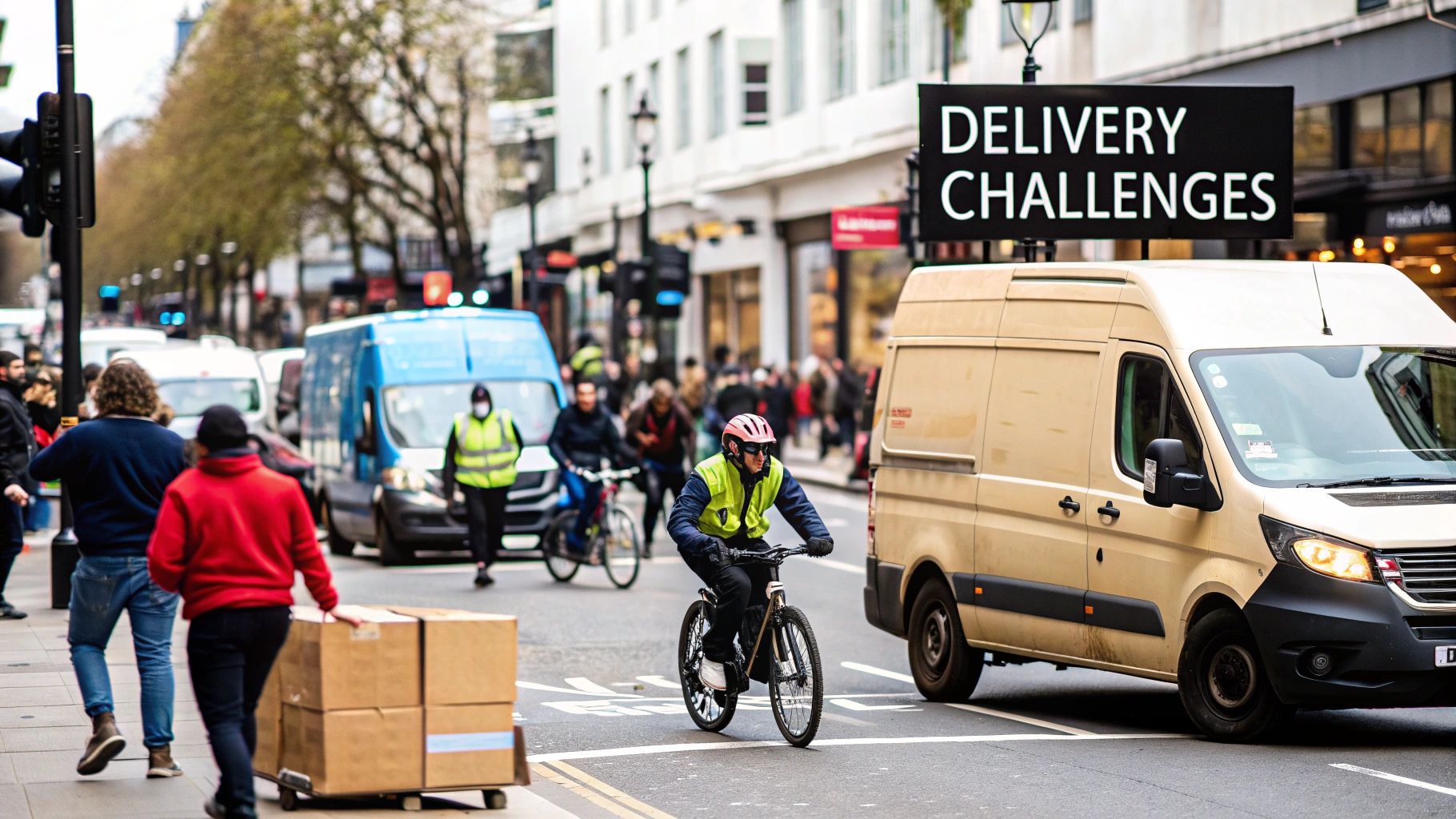
Let's be real: getting packages to your customers' doors is where things get messy and expensive. That final stretch of a package’s journey—the "last mile"—is notoriously inefficient. It's a complex puzzle of one-off stops, unpredictable city traffic, and customers who expect their delivery yesterday.
For many businesses, it’s the single biggest headache in their logistics operations. And it’s not just a logistical hurdle; it's a huge financial one. In fact, that last mile can eat up over 40% of your total shipping costs. When you're managing dozens, or even hundreds, of individual deliveries every day, those costs stack up fast and slice directly into your profit margins.
The pressure to get this right is only getting more intense. With e-commerce continuing to explode, customers’ demands for faster, more reliable, and transparent deliveries are setting the new standard. This isn't just a passing trend; it's a massive market shift.
The global last-mile delivery market is on track to hit around $170.6 billion by 2025 and is expected to skyrocket to an incredible $504.8 billion by 2034. This explosive growth is fueled by industries like retail, food, and even healthcare, all of which depend on getting that final mile right. If you want to dive deeper, you can learn more about the projections for the last mile delivery market and its future growth.
This is exactly where a solid optimization strategy becomes your secret weapon. To really get a handle on it, let's break down the core components.
This table breaks down the core components of a winning last mile delivery strategy, giving you a quick, scannable overview of the concepts we’ll cover.
As you can see, a great strategy isn't about just one thing—it’s about combining technology, smart operations, and a customer-first mindset to create a seamless system.
The goal isn't just to drop off a box. It's to create a smooth, positive experience that turns a one-time buyer into a loyal, repeat customer—all while protecting your bottom line.
Think about a local furniture company delivering a new sofa. A poorly planned route could mean the driver gets stuck in rush-hour traffic. The result? A late delivery, a frustrated customer who took the day off, and wasted fuel. Now, imagine that same scenario playing out multiple times a day. The costs, both to your wallet and your reputation, are huge.
Effective optimization completely flips that script. It helps you navigate the chaos of modern logistics, turning your biggest challenge into a powerful competitive advantage. Throughout this guide, we'll walk through the practical, actionable strategies to make that happen for your business.
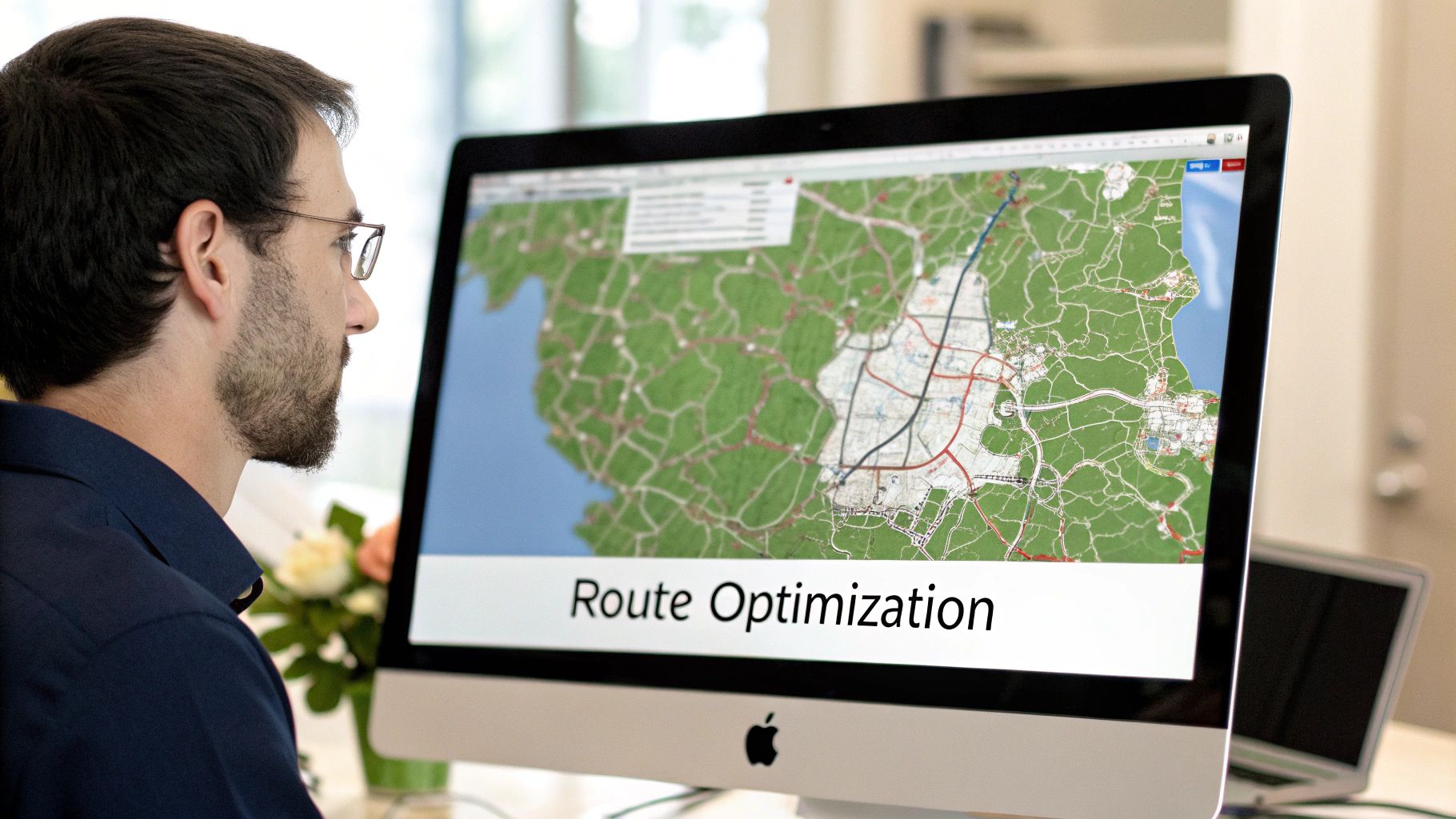
Ever look at your P&L statement and just shake your head at how much that final delivery stretch eats up? You're not imagining it. The last mile is, without a doubt, the most expensive leg of the journey for any shipment.
Believe it or not, this single segment is responsible for a staggering 53% of total shipping costs. That number alone makes it clear that optimizing your last mile isn't just a "nice-to-have"—it's an absolute must for a healthy bottom line.
This isn't just one single expense causing the headache. It's a perfect storm of factors that stack up fast. Picture one of your drivers trying to deliver a bulky item, like a sofa, to a downtown apartment during rush hour. They're battling stop-and-go traffic, burning through fuel, and spending a ton of time on just one drop-off. Now, imagine that scenario playing out for every single delivery you make. The costs add up quickly.
Some expenses are easy to see on a spreadsheet. You know you're paying for fuel, driver wages, and vehicle maintenance. But it's the hidden costs that really sneak up and gut your profitability. These are the budget-killers that often go untracked but are definitely felt when you look at the numbers at the end of the month.
Here’s a look at what you’re really paying for in that final mile:
These expenses all feed into each other, which is why having a solid last mile delivery optimization strategy is so important. For a deeper dive into controlling these kinds of expenses, our guide on how to reduce freight costs is a great place to start.
Let's talk more about failed deliveries, because they are a uniquely painful expense. They happen in about 5% of all cases and can lead to an average loss of $17.78 each time. And why do they happen? Usually, it's something simple: a typo in the address, the customer isn't home to sign, or just a lack of communication between the driver and the recipient.
These failures don’t just hit your wallet; they chip away at customer trust and your brand's reputation.
A single failed delivery isn't just a $17.78 loss. It's a crack in your customer relationship, a drain on your operational capacity, and a red flag that your process has room for improvement.
The good news? None of these costs are set in stone. Every one of these challenges is really an opportunity to find savings. By making smart, targeted adjustments to your LTL or FTL freight planning, you can start to plug these financial leaks. Before you know it, you can turn your last mile from a massive cost center into a real competitive advantage.
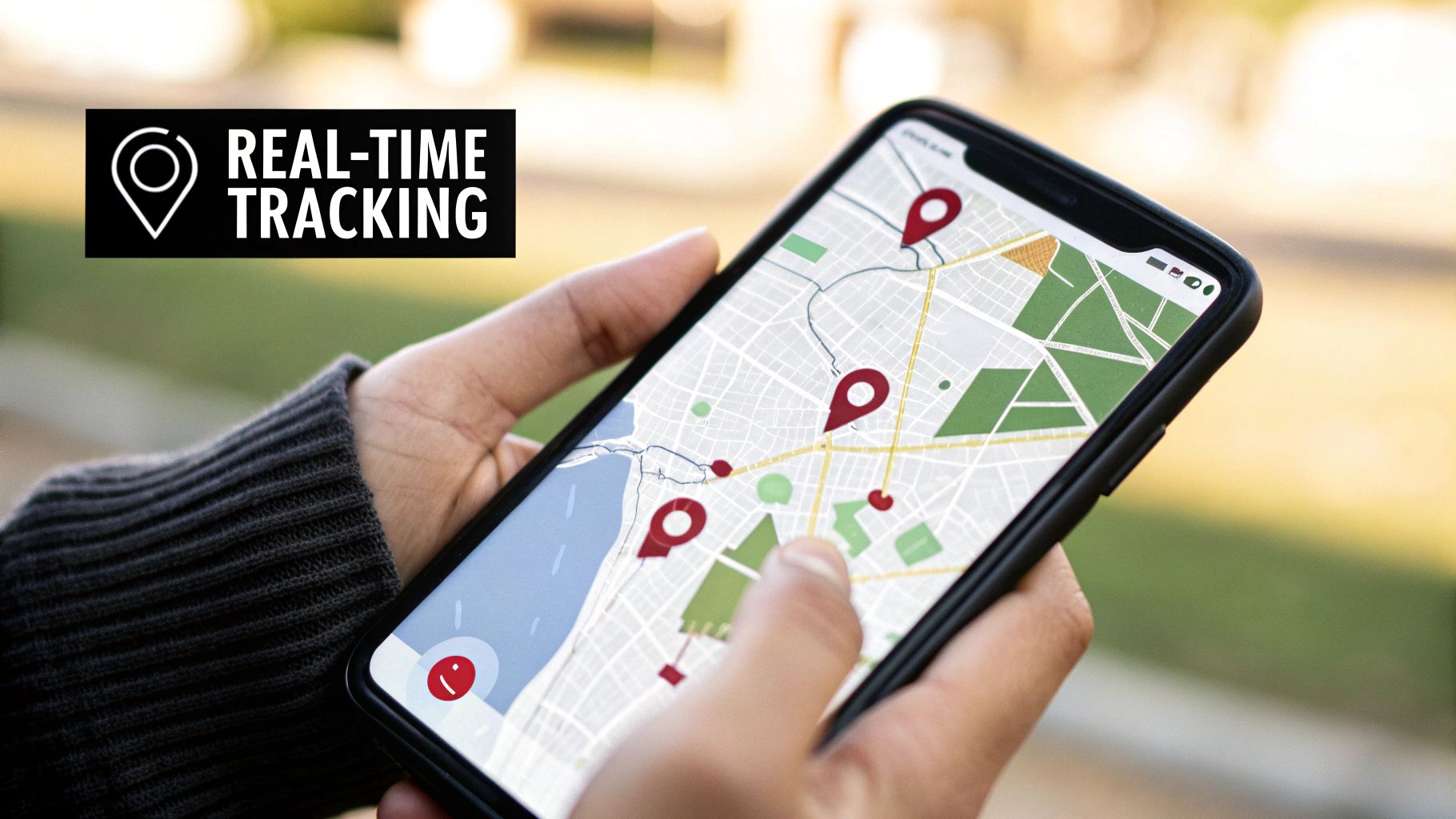
It’s one thing to talk about the headaches of last mile delivery. It's another thing entirely to actually do something about them. From my experience, the single most powerful change you can make is bringing the right technology into your operation. We're talking about tools that make every delivery smarter, quicker, and a whole lot cheaper.
The real game-changer here is a shift in mindset—from being reactive to being proactive. Instead of your driver calling in about a surprise traffic jam, you've already seen it coming and rerouted them. This is all possible thanks to specialized software that does the heavy lifting, turning a logistical nightmare into a clear, actionable plan.
If I had to pick two pieces of tech that form the bedrock of a modern delivery system, it would be route optimization software and real-time tracking. These aren't just fancy add-ons; they are the workhorses that drive efficiency.
Route Optimization Software: Forget Google Maps for your daily route. This is a whole different beast. It’s software that uses complex algorithms to figure out the absolute best route, factoring in everything from traffic flow and delivery windows to vehicle space and even how many left turns a driver has to make. It's all about minimizing wasted time.
Real-Time Tracking: This gives you and, just as importantly, your customers a live look at where every single package is. For you, it means you can manage your fleet on the fly and deal with issues the moment they pop up. For the customer, it replaces the anxiety of waiting with the confidence of knowing.
Picture a driver with 50 stops in a busy downtown area. Trying to plan that route by hand is a recipe for disaster. But with good software, the perfect sequence is generated in seconds. The savings in fuel and time are immediate and significant.
To give you a clearer idea, here’s how these technologies stack up and what they deliver.
This blend of technology is exactly why the last-mile delivery market in North America is exploding. It's on track to blow past $50 billion by 2025 and is projected to hit over $71 billion by 2030. Real-time data is no longer a "nice to have"—it's the standard for staying competitive.
Now, these tools are great on their own, but they're truly transformative when they talk to each other. This is where a Transportation Management System (TMS) comes in. Think of a TMS as the command center for your entire logistics operation. It pulls your routing, tracking, and carrier communications into one clean dashboard.
A top-tier last mile operation isn't about one magic tool. It's about creating an interconnected system where information flows seamlessly from the warehouse floor all the way to the customer's front door.
To get the full picture, I recommend digging into the core benefits of a transportation management system in our other guide. It breaks down how these platforms give you that crucial bird's-eye view, helping you make smarter calls on everything from driver schedules to LTL freight.
While things like delivery drones and autonomous trucks are on the horizon, the technology available today offers real, substantial returns right now. By focusing on smart routing, live tracking, and an integrated TMS, you can build a last mile operation that’s not just efficient, but resilient.
Alright, let's talk about the real-world tactics that actually work. Theory is great, but what you need are strategies you can put into practice today to see a difference in your last mile delivery optimization. These aren't pie-in-the-sky ideas; they're grounded, practical moves that can deliver immediate results.
One of the most effective things you can do, and something that's surprisingly overlooked, is load pooling. Just think about it. You've probably got a bunch of smaller, less-than-truckload (LTL) shipments all heading to the same part of town. Instead of sending out several half-full trucks, why not combine them? Pooling those orders onto a single, packed vehicle is a game-changer. It’s a classic case of working smarter, not harder, and it immediately cuts down on fuel, driver time, and vehicle maintenance.
Here's another powerful move: decentralize your inventory using micro-fulfillment centers (MFCs). These are just small, smartly-placed warehouses located right where your customers live. Instead of every single online order making a long journey from a massive, faraway distribution hub, you can fulfill it from a local MFC.
This one change can dramatically slash the final travel distance, which we all know is the most expensive leg of the journey. That 30-mile headache across the city suddenly becomes a quick 3-mile hop. The savings in both time and money are huge.
Moving inventory closer isn't just a tweak for speed. It's a fundamental change in your logistics that lowers the cost and headache of every single delivery you make from that spot.
To get a better picture of how this works, take a look at this flow. It shows you how to go from finding where your customers are clustered all the way to dispatching locally.
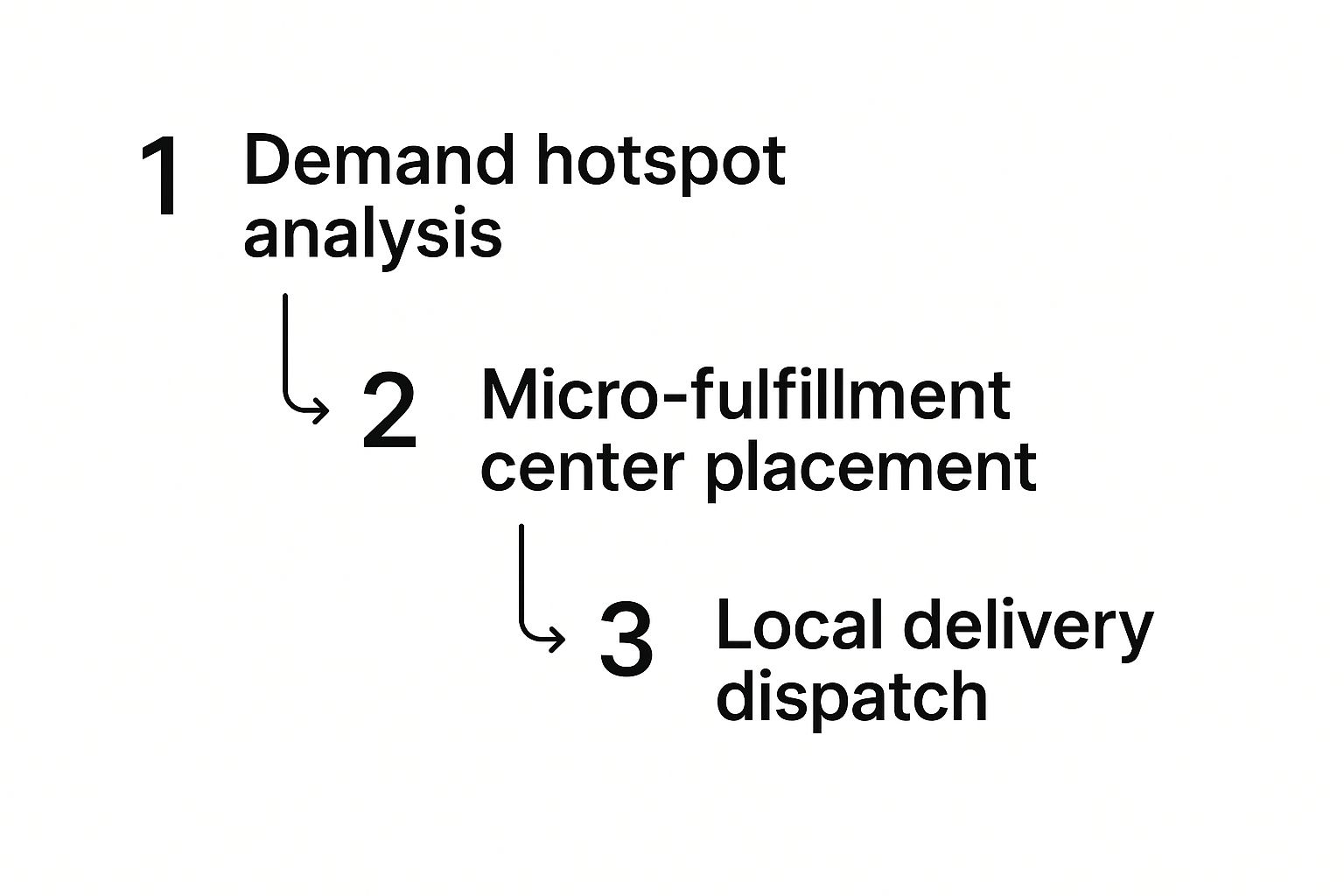
As you can see, smart local delivery starts with data. You have to know where to place your inventory before a single truck ever hits the road.
When it comes to the final mile, communication is king. A customer who feels left in the dark is an anxious customer, and that’s a recipe for a bad experience. Setting up automated delivery alerts is a simple fix with an outsized impact on customer happiness.
Here’s a simple playbook you can implement:
This kind of transparency does wonders. It cuts down on those "Where is my order?" calls and builds a ton of trust.
Flexibility is the other side of this coin. Not everyone wants or needs their package dropped on the porch. Giving customers options like Buy-Online-Pickup-In-Store (BOPIS) or secure parcel lockers can be a win for everyone.
For your business, it means you can consolidate drop-offs and almost completely avoid the massive cost of failed first-delivery attempts. For your customer, it means they can grab their package whenever it’s convenient for them. It’s a brilliant way to add value while trimming your own expenses, whether you're dealing with FTL or LTL freight.
You can plan the most efficient route and negotiate the best carrier rates, but none of it matters if the person waiting for the package has a terrible experience. At the end of the day, last mile delivery optimization is about more than just numbers on a spreadsheet—it's about creating happy, loyal customers who feel like you've got their back.
This means we need to shift our focus from the truck on the road to the person on the other side of the door. And believe it or not, the best tools for this aren't complex algorithms, but simple transparency and great communication.
Let's imagine a quick scenario. Store A sends you a single "your order has shipped" email, and then... crickets. You're left guessing, peeking out the window, wondering if today's the day. It's frustrating.
Now, think about Store B. They text you when the package is out for delivery, give you a live tracking map so you can see the driver approaching, and send a final "It's here!" notification with a picture of the box on your porch. Which experience leaves you feeling more confident and respected?
It's all about managing expectations. When you provide accurate delivery windows and keep people in the loop, you turn a mundane transaction into a genuinely positive experience. This proactive approach builds incredible trust and drastically cuts down on those "Where is my order?!" calls that eat up your team's time.
A customer left in the dark is an anxious customer. A well-informed customer is a loyal one. The difference often comes down to a few simple, automated notifications.
Even with the most perfect plan, things go wrong. A sudden traffic jam, a flat tire, a freak thunderstorm—it happens. How you handle these moments is what separates the good from the great.
Don't wait for the customer to realize you're late. Get ahead of it. A simple, honest message can completely change the tone of the situation.
You've just turned a moment of potential frustration into an opportunity to show that you're on top of it and that you value their time. This kind of service is a game-changer, especially for companies figuring out their shipping strategy. You can find more practical advice like this in our guide to small business shipping solutions.
The final piece of this puzzle is simple: listen. Your customers are holding a goldmine of information on how to improve your delivery process. Are they constantly missing deliveries because the time window is too broad? Are packages being left in the rain?
You'll never know unless you ask.
Actively solicit feedback with a quick post-delivery survey. Just one or two questions can reveal priceless insights that help you fine-tune your entire last mile operation. This feedback loop is what turns your delivery service from a cost center into a powerful tool for earning repeat business.
It's one thing to talk about strategy, but it’s another thing entirely to put it into action. When you start digging into your own last mile operations, questions are bound to pop up. Let's tackle some of the most common ones I hear from business owners just like you.
My advice? Start with a good, hard look at what you’re doing right now. You can't fix what you don't understand.
Before you even think about new tech or partners, you need to get a baseline. Start tracking a few key numbers: What’s your average cost per delivery? How often are you actually hitting your promised delivery windows? What’s your failed delivery rate? These aren't just numbers on a spreadsheet; they're the story of your current operation.
Honestly, auditing your process isn't about finding what's broken. It's about spotting the golden opportunities—those one or two areas where a small tweak can lead to a huge win.
Once you have a handle on your numbers, finding the best FTL or LTL freight rates becomes much easier.
Yes, absolutely. This is a common misconception. The days of needing a massive, upfront investment for logistics tech are long gone.
Many of the best platforms today are built to scale. You'll find plenty of Software as a Service (SaaS) options that work on a simple pay-as-you-go or subscription model. For a small business with just a handful of vehicles, even a basic route optimization app or an automated SMS notification system can pay for itself almost immediately in fuel savings and fewer customer service calls.
The trick is to not try to boil the ocean. Start with a single, affordable tool that solves your biggest headache, and then add more capabilities as your business grows.
This is a big one, because the right third-party logistics (3PL) partner can be a game-changer, while the wrong one can be a nightmare. It's about more than just finding the cheapest rate.
Here's what I look for:
Don't be shy about asking for proof. Request case studies from businesses similar to yours and always, always check references. You need to be confident they can back up their claims of efficiency and happy customers.
Ready to stop guessing and start optimizing? The logistics pros at FreightQuotesNow are experts at connecting businesses with the right carriers for their FTL and LTL freight, making sure your final mile is your best mile. Get your free instant freight quote today!